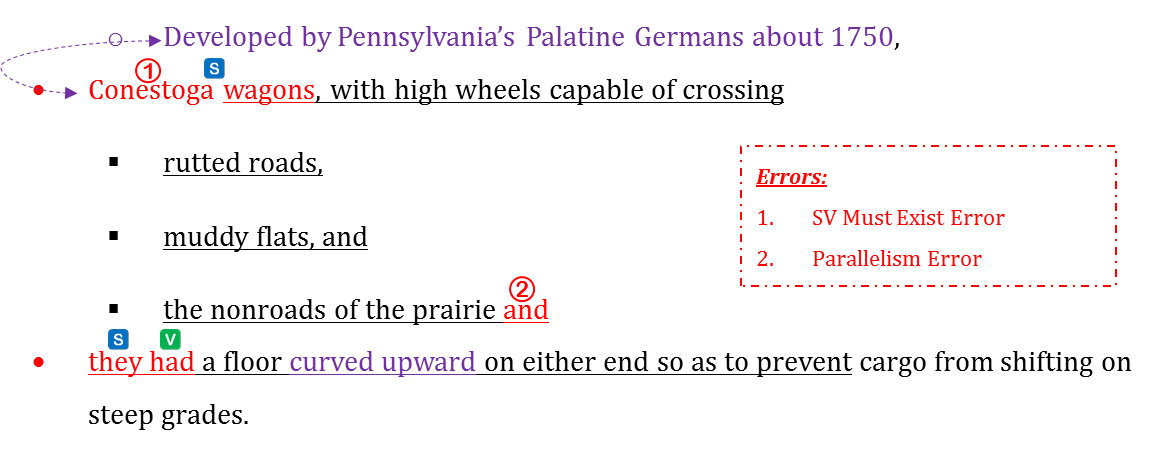Developed by Pennsylvania’s Palatine Germans about 1750, Conestoga wagons, with high wheels capable of crossing rutted roads, muddy flats, and the nonroads of the prairie and they had a floor curved upward on either end so as to prevent cargo from shifting on steep grades.
Meaning Analysis
- Developed by Pennsylvania’s Palatine Germans about 1750,
- Conestoga wagons, with high wheels capable of crossing
- rutted roads,
- muddy flats, and
- the nonroads of the prairie and
The sentence presents information about a particular type of vehicle named Conestoga wagons. We get to know about the origin of these wagons and the characteristics of their wheels that were designed to travel on any kind of surface. Reading further:
- they had a floor curved upward on either end so as to prevent cargo from shifting on steep grades.
In this part of the sentence, we are told about a particular aspect of the design of the vehicles. We get to know that these wagons were designed in a fashion that it prevented the cargo the vehicle would carry from getting displaced when it moved over steep slopes. To sum up, the sentence presents some information about the design of a specific type of vehicle – the Conestoga wagons. We find out that these vehicles had high wheels so that they could travel on difficult roads and had specially planned floor to stop the goods from getting displaced as the vehicles moved over steep slopes.
Error Analysis

1. Subject Verb Must Exist Error
There is no verb for the subject Conestoga wagons.
2. Parallelism Error
In the sentence, what follows and is a clause they had… However, the portion before and is not a clause. Therefore the two elements connected by and are not parallel, leading to a parallelism error.
POE
Choice A
Incorrect
This choice has the errors pointed out in the error analysis.
Choice B
Incorrect
Subject Verb Must Exist Error
This choice repeats the subject verb error of choice A.
Choice C
Incorrect
Subject Verb Must Exist Error
This choice also repeats the subject verb error of choice A.
Choice D
Correct
This indeed is the correct answer choice. The subject Conestoga wagons now has a corresponding verb (had). Also the wagons’ two features – high wheels and a floor – are perfectly parallel and present their purpose clearly.
Choice E
Incorrect
Pronoun Error
Singular pronoun …it… does not agree in number with its plural noun antecedent …floors….














